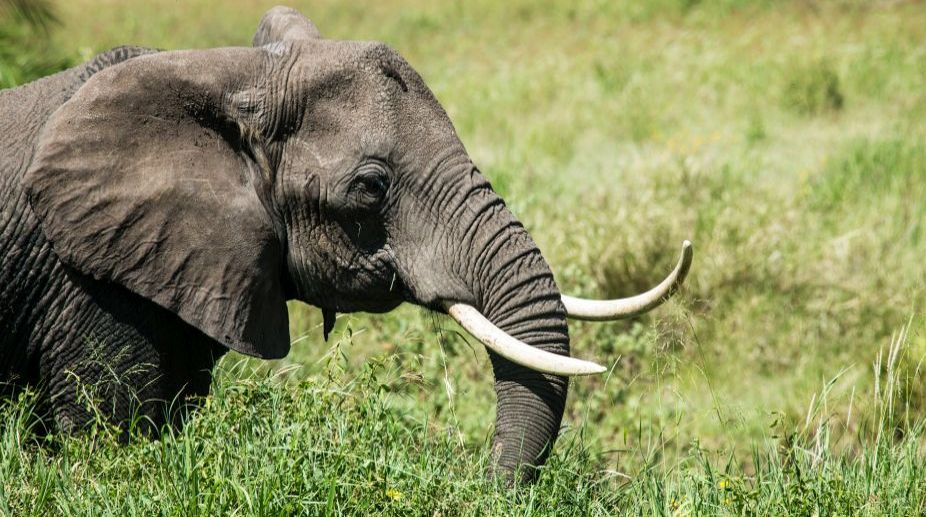There were two “lone bulls” in the place keeping together in a close pair, one really massive and with short, symmetrical tusks, and the other smaller, with long, down-curved, uneven tusks. I had glimpses of them from time to time and soon realised that they were often coming down to the river to drink and bathe, crossing the main bus road close to a busy settlement, where the road was flanked on either side by clumps of giant bamboo.
I spent two afternoons lying in wait on the farther bank of the river and had no luck. The first day they came to the water soon after I had packed up and left and, on the second, they visited a small forest pool some distance away, as I saw later from their tracks.
Advertisement
Wild elephants in the Nilgiris are prone to attack men (with much justification, I think), but these tuskers were said to be peaceable, and I spent three days in a determined effort to get close-ups of them. In this I failed, but in those three days I learnt much about what wild elephants have to put up with from humanity in places where men have invaded their territory and settled down on it.
The locals did everything they could to disturb and prevent the two bulls from crossing the road near their settlement. Incidentally, the elephants chose this point not because they liked to cross the road near the settlement, but because it was the only approach that gave them a sheltered crossing and an easy path down the bank to the river.
Once, when the elephants wee approaching the road, three lorries each laden with some thirty coolies came along, and the men stopped the lorries on sighting the beasts and began to shout, gesticulate and point excitedly, effectively driving them away.
On the evening of the last and third day, after being delayed by passing cars and buses for an hour and a half, the elephants came to the roadside; then the larger tusker crossed the road swiftly and, in one fluid movement, threw half-a-dozen bamboo culms right across the road. My picture was taken immediately afterwards, from a prudent 150 yards away. I have noticed this tendency of wild elephants to break bamboo in such a way that the culms fall across the road when they cross it; this may be an instinctive action and not an intelligent one but it does serve the purpose of halting people and motor vehicles coming along the road. This habit frequently results in electric lines, running along the road overhead, being damaged by the bamboos falling on them.
Many wild animals, particularly elephants, are much more destructive when apprehensive of disturbance by men than when they fear no intrusions on their privacy. I will not discuss the point here but may say that this destructiveness is really akin to a demonstration of power and is motivated by nervousness. It is frequently claimed by people residing in or near elephant jungles that the great beasts trample down much more than they eat when raiding crops and that by nature they are extremely wasteful in their feeding. This is not true. I have spent many days watching herds of elephants, as well as lone bulls, feeding in remote forests where they were safe from frequent disturbance by men, and they were not at all wasteful, even when feeding on bamboo. Incidentally, a bamboo clumps is not destroyed by elephants tearing it down but regenerates from its underground stems.
Only in April last year I spent three continuous days carefully observing a large composite herd of some 45 elephants in an interior forest in the Nilgiris, and I also studied the ground carefully after they had moved on. The damage to the vegetation was incredibly little.
When bothered by men, elephants are destructive and not only in their feeding. They will uproot milestones and posts (unless these are painted a dark colour) and wreck any new human intrusion into their immemorial homes. Few people seem to realise how directly proportionate to disturbances, and injuries, caused by men the aggressiveness of elephants towards humanity is.
To return to my two tuskers, they gained little peace by putting up this road block. Before the lesser tusker, lagging behind, could join his leader, a succession of cars and buses arrived at the road block and scared both beasts away. The lesser tusker did attempt to cross the road a furlong further down, but in this he was frustrated by my wife.
Ignoring my urgent warnings, my wife was standing right in the middle of the road at this spot, talking to a chance-met friend proceeding towards Ooty, whose car had been stopped by the road block. The tracks clearly showed that the tusker had come on to the road from behind a bamboo clump, to be confronted by two ladies standing on the road barely 20 ft away, heatedly discussing some mutual acquaintance. He turned round promptly and fled through the forest towards less troublesome water.
This was published on 3 April 1967











